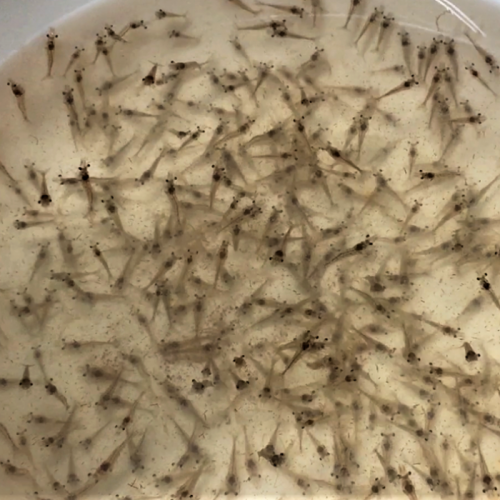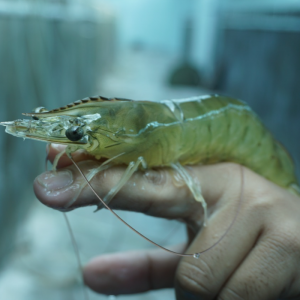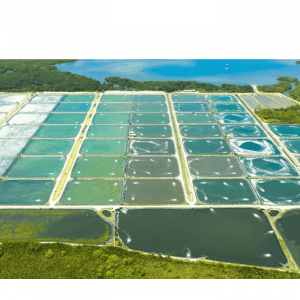
Evaluating Plant Protein Sources Replacing Fishmeal In Juvenile White Shrimp Diets
| Thu, 24 Sep 2020 - 19:50
The Pacific white shrimp (Litopenaeus vannamei) is an important aquacultured species and the most important cultured shrimp species in the world, mostly because its rapid growth, disease tolerance, high stocking-density tolerance, relatively low dietary protein requirement, and broad base of supporting research. However, as the body of knowledge about its dietary requirements grows, there is a need and an opportunity to optimize diets by minimizing dietary fishmeal inclusion.
When replacing fishmeal with a more economic protein source, it is important to consider not just the price point, but to consider also other aspects such as nutritional value, digestibility, palatability and the presence of anti-nutritional factors.
One of the most successful plant-based protein crops in animal feed is soybean meal. This is due to its high content of protein (47 percent) and lipid (2.2 percent) along with its low price compared to fishmeal ($400 to 500 per ton). Likewise, sesame seed meal also presents many of the same advantages found with soybean meal but with a much higher lipid content. Sesame seed meal typically contains around 42 percent protein making it comparable to soybean meal; however, it contains roughly five times the lipid content at 11.2 percent.
In recent years, there has been interest in the use of fermentation to increase the digestibility of plant-based proteins in many important aquaculture species. The fermentation process helps to break down more complex protein matter in the plant matter to make it more readily available for digestion. For example, fermented soybean meal has approximately 56 percent crude protein, whereas unfermented soybean meal has 47 percent. Another important benefit in fermented products is the enrichment by the bacteria itself.
Many companies have been focusing on producing fermented plant protein products by a wide variety of microbes and processes such as batch, continuous, fed-batch, anaerobic, aerobic, surface, submerged and solid-state fermentation. Therefore, it is important to investigate the effects of fermented plant-based protein sources as possible fishmeal replacers in Pacific white shrimp diets.
This article – adapted and summarized from the original [Bae, J., Hamidoghli, A., Djaballah, M.S. et al. Effects of three different dietary plant protein sources as fishmeal replacers in juvenile whiteleg shrimp, Litopenaeus vannamei. Fish Aquatic Sci 23, 2 (2020)] – reports on a seven-week experiment conducted to evaluate soybean meal, fermented soybean meal and sesame meal as fishmeal replacers in juvenile Pacific white shrimp.
Also read: Effect of Streptomyces Probiotics on Gut Microbiota of Pacific White Shrimp
Study setup
Juvenile L. vannamei were transported from the Pal-ttak Shrimp Farm in Go-seong, Rep. Korea and stocked in 250-liter rectangular tanks at Feed & Foods Nutrition Research Center (FFNRC, Pukyong National University, Busan, Rep. Korea).
Twenty juvenile shrimp (0.7 ± 0.03 grams mean ± SD) were randomly stocked into each of 21, 45-liter tanks as a triplicate groups. Filtered seawater with 1.3 liters per min flow was supplied to each tank in a semi-recirculating system, and water temperature was maintained at 28 ± 1.0 degrees-C for the whole experimental period. Shrimp were fed four times a day at 7 percent wet body weight during the seven weeks of experiment. The amount of total feed was adjusted according to any mortalities, and shrimp feces were removed by siphoning every day.
Commercial fishmeal, soybean meal, poultry byproduct, blood meal, meat and bone meal, squid liver powder and wheat gluten meal were used as protein sources in the experimental feed formulations. Fish oil was used as the lipid source. Seven isonitrogenous diets were formulated to replace 20 and 40 percent of fishmeal by soybean meal (SB20 and SB40), soytide (ST20 and ST40), and sesame meal (SM20 and SM40) included CON. Soytide is a commercial product of fermented soybean meal with Bacillus subtilis at 37 degrees-C. Every ingredient was well-powdered and mixed using electric mixer. Fish oil was added according to feed formulation. The mixture was passed through a pellet machine with a 0.2 cm die. The prepared experimental diets were dried in the drying room for 48 hours then stored at minus-20 degrees-C.
After seven weeks of the feeding trial, every shrimp was counted and weighted in each aquarium and taken and measured to calculate growth performance including weight gain, specific growth rate, feed efficiency, protein efficiency ratio and survival percentage, according to Mohanty (1999).
For detailed information on the experimental design and diets; animals and feeding conditions; sample collection and analyses; and statistical analyses, refer to the original publication.
Also read: Marketplace to Industry, Governments: Solve Shrimp Diseases
Results and discussion
The diets prepared for this experiment were readily accepted by the shrimp and almost no uneaten feed was observed in the tanks 1 hour post feeding. Also, the survival percentage of each tank at the end of experiment was normal considering the initial weight of shrimp and the experimental period. Based on weight gain, specific growth rate, feed efficiency and protein efficiency ratio, 20 and 40 percent replacement of fishmeal with soybean meal, sesame meal, or fermented soybean meal did not show significant differences compared to the control group.
However, shrimp growth performance with the 20 percent fishmeal replacement (ST20) with fermented soybean meal was significantly higher than the sesame meal fed group (SM20 and SM40).
Soybean meal is appropriate to replace fishmeal in aquafeeds due to high protein level, balanced amino acid content and acceptable price, but some anti-nutritional factors can decrease the nutritional value of this ingredient and reduce the digestibility. Fermentation of plant ingredients can reduce the anti-nutritional factors and enhance the digestibility. The significant differences observed in the present study with growth performance of shrimp fed the fermented soybean meal is probably due to the partial elimination of anti-nutritional factors and increased digestibility of ingredients.
Other authors similarly compared fermented and non-fermented plant proteins such as soybean meal, groundnut oil cake, rapeseed meal, and sunflower oil cake in the diet of L. vannamei. Their results indicated higher apparent digestibility coefficient of fermented soybean meal along with higher amino acid digestibility.
These results agree with the findings of our study, that fermented soybean meal increased the growth performance of L. vannamei compared to sesame meal, although we did not observe major differences between fermented and non-fermented soybean meal groups. Another explanation for the higher growth performance of fermented soybean meal could be attributed to the probiotic B. subtilis compounds available in this ingredient.
In a similar study, fermented soybean meal with B. subtilis increased the apparent digestibility coefficient of crude protein in L. vannamei. Probiotics can benefit shrimp by exclusion of pathogenic bacteria and production of some digestive enzyme that can facilitate the digestion process. Although further studies regarding the effects of probiotic-fermented plant proteins on growth performance of shrimp are required.
Shrimp are among the species that lack adaptive immunity (also known as acquired immune system, part of the of the immune system and composed of specialized, systemic cells and processes that eliminates pathogens by preventing their growth) and therefore their health condition depends largely on non-specific immune responses.
Superoxidase dismutase (SOD) and lysozyme are enzymes that neutralize radical oxygen species [chemically active] and breakdown cell walls of pathogenic organisms, respectively. Our results for SOD activity showed higher values for shrimp fed the fermented soybean meal (ST20 and ST40) compared to 40 percent replacement by both soybean meal (SB40) and sesame meal (SM40). These results corresponded with serum lysozyme activity where 20 percent of fermented soybean meal (ST20) was significantly higher than 40 percent of soybean meal (SB40) and sesame meal (SM40). And these results agree with previous findings that reported enhanced non-specific immune responses of fish fed fermented plant protein sources.
Also read: Study Replaces Dietary Fish Oil With Microalgal Oil
Perspectives
The results of our study demonstrated that soybean meal, fermented soybean meal and sesame meal could replace 40 percent of fishmeal in L. vannamei diets, based on growth performance and lysozyme activity. But based on superoxide dismutase activity, soybean meal and sesame meal could replace up to 20 percent of fishmeal and fermented soybean meal could replace up to 40 percent of fishmeal in Pacific white shrimp juveniles.
Source: Global Aquaculture Alliance






















